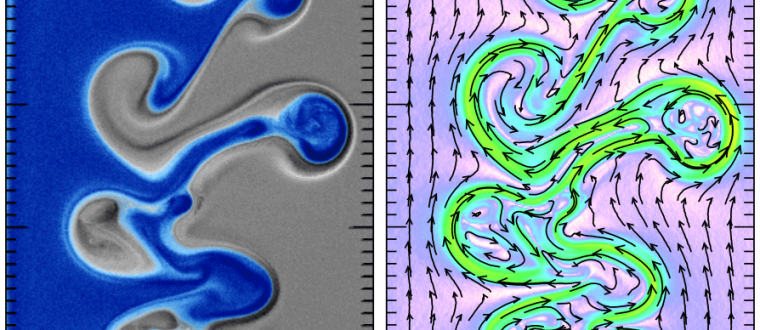Computing Award a Big Win for High Energy Density Science at SLAC
By HED

A member of our Science Directorate’s High Energy Density Science (HEDS) division, Frederico Fiuza, is among the 49 winners of the Department of Energy’s 2016 Advanced Scientific Computing Research (ASCR) Leadership Computing Challenge.
Fiuza received 60,000,000 processor hours for his proposal “Ab initio modeling of the dynamical stability of HED plasmas: from fusion to astrophysics.”
He will use the processor hours, currently valued at about $2 million, for modeling instabilities in high energy density plasmas related to fusion energy and astrophysics.
“The simulations can lend insight into a range of discovery science areas, such as particle acceleration and magnetic field generation in astrophysics, and even how to better produce clean energy from fusion,” Fiuza said.
The High Energy Density Science division is among the new SLAC science research groups. The team uses the unique properties of LCLS and the high-power optical laser beam to conduct experiments with the Matter in Extreme Conditions (MEC) instrument supported by DOE’s Office of Fusion Energy Sciences (FES).
FES is a new funding source for SLAC. The program contributed $5 million to the lab’s research in 2016.
To better understand matter in extreme conditions, researchers can simulate particle behavior at a microscopic scale. The modeling allows scientists to predict what may happen in laboratory conditions and in nature.

Particle-in-cell simulation of the dynamical stability of an interface between two high energy density plasmas. Left – plasma density. Right – magnetic field structure. (SLAC National Accelerator Laboratory)
The work requires major computing power in order to capture the fundamental behavior of matter. For example, one of Fiuza’s recent studies predicted the possibility of studying particle acceleration when two magnetized plasmas collide during laser experiments, in a process analogous to what scientist believe happens in solar flares. The calculations required more than a million supercomputing hours.
“Using our state-of-the-art code and the substantial computational resources provided by ASCR, we aim to provide a fundamental understanding of these plasma systems,” Fiuza said. “It will help us to make faster progress in the discovery science mission space of FES."
ASCR contributed $300,000 to SLAC research last year.
The ASCR Leadership Computing Challenge award supports projects “with an emphasis on high-risk, high-payoff simulations in areas directly related to the DOE mission,” including bioenergy, climate research, cosmology, particle physics and fusion energy. This year, the program awarded a total of 3 billion processor hours at supercomputing facilities.



